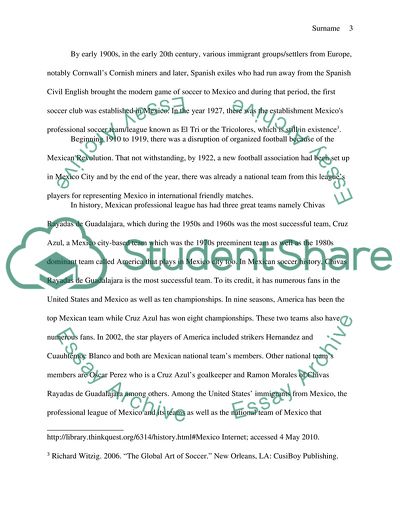Cite this document
(The History of Soccer in Mexico Research Paper Example | Topics and Well Written Essays - 3250 words, n.d.)
The History of Soccer in Mexico Research Paper Example | Topics and Well Written Essays - 3250 words. Retrieved from https://studentshare.org/sports-and-recreation/1737651-the-history-of-soccer-in-mexico
The History of Soccer in Mexico Research Paper Example | Topics and Well Written Essays - 3250 words. Retrieved from https://studentshare.org/sports-and-recreation/1737651-the-history-of-soccer-in-mexico
(The History of Soccer in Mexico Research Paper Example | Topics and Well Written Essays - 3250 Words)
The History of Soccer in Mexico Research Paper Example | Topics and Well Written Essays - 3250 Words. https://studentshare.org/sports-and-recreation/1737651-the-history-of-soccer-in-mexico.
The History of Soccer in Mexico Research Paper Example | Topics and Well Written Essays - 3250 Words. https://studentshare.org/sports-and-recreation/1737651-the-history-of-soccer-in-mexico.
“The History of Soccer in Mexico Research Paper Example | Topics and Well Written Essays - 3250 Words”, n.d. https://studentshare.org/sports-and-recreation/1737651-the-history-of-soccer-in-mexico.


